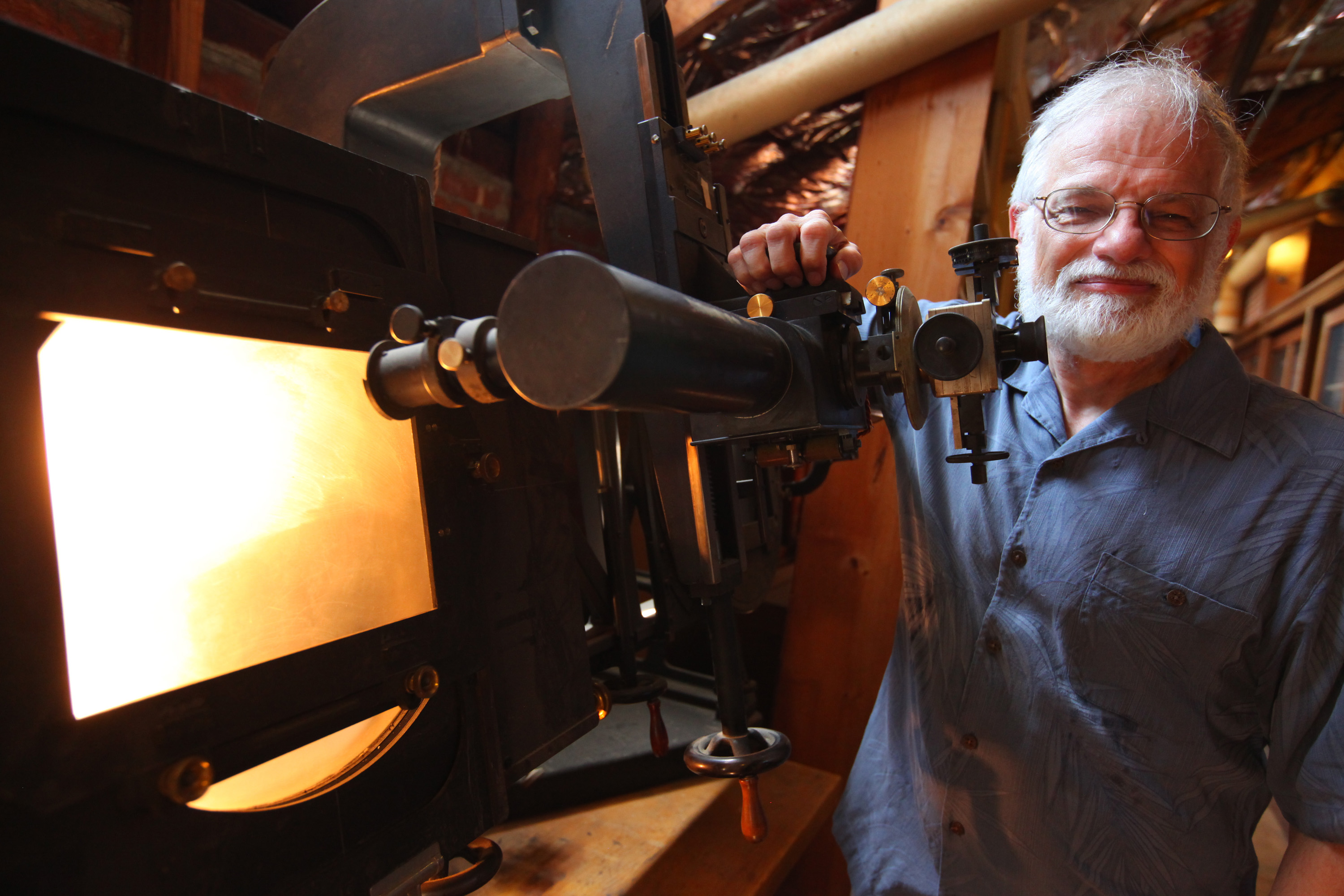 The antique brass telescope that sits in a corner of an astronomy classroom in the Sanders Science building has no practical use anymore. There’s a much larger and more powerful one in the college observatory elsewhere on campus.
The antique brass telescope that sits in a corner of an astronomy classroom in the Sanders Science building has no practical use anymore. There’s a much larger and more powerful one in the college observatory elsewhere on campus.
But the 150-year-old relic has a proud history: Renowned astronomer Maria Mitchell used it regularly when she taught at Vassar from 1865 to 1888. “I know (Mitchell) used this telescope because we have pictures of her looking through it hanging in our observatory,” said astronomy Prof. Fred Chromey.
Mitchell’s old telescope is one of several historically significant artifacts used by Vassar astronomy professors and students that will soon need a new home. The Sanders building will be gutted as early as next spring when the college builds its new science center.
A committee of faculty and staff has formed the Vassar College Artifacts Project (VCAP) to identify and find ways to preserve and display dozens of science teaching tools that have accumulated since the college was founded.
Other astronomical equipment that will need to be preserved: a pair of celestial globes used by Mitchell and her successors to show the locations of constellations and a century-old blink comparator, a large optical device that helped astronomers detect the movement of planets or comets or changes in the size of stars. Astronomer Clyde Tombaugh, working at the Lowell Observatory in Flagstaff, Ariz., was using a blink comparator similar to the one at Vassar when he discovered Pluto in 1930. “For the first half of the 20th century, it was the workhorse of astronomers’ tools,” Chromey said.
The blink comparator, now being stored in the attic of Sanders, is one of only two still in existence in the United States, Chromey said. The other is on display at the Mt. Wilson Observatory in Pasadena, Calif.
Chromey said it was unusual for a small liberal arts college to have such an expensive device. “The larger research universities – Stanford, Harvard, Chicago – all had them at one time, but for a place the size of Vassar, that was remarkable,” he said.
Science historian and physics Prof. James Challey, a member of the VCAP committee, said Mitchell’s legacy had played a major role in Vassar’s acquisition of numerous pieces of state-of-the-art science equipment long after her death. “Vassar has more astronomy-related stuff and physics equipment related to astronomy than many universities,” he said. “All our astronomy equipment is top of the line because that’s one of the things that made the college famous in its early years – Maria Mitchell being here,” Challey said.
He said the VCAP committee also hopes to find a way to preserve and display a device called a spectrometer that was installed in Sanders Science when it was built in the mid-1920s. The spectrometer measures wavelengths of sunlight to determine what elements exist on the sun. “It’s historically important because the work that was done on spectrometers eventually led to the development of quantum mechanics,” he said.
Challey said he was confident the college would find ways to save all of the old science equipment that’s worth saving. He said committee members had already held preliminary talks with architects for the new science center about finding space to display at least some of the artifacts. “It’s important that we do this,” he said. “It will show how Vassar fits into the bigger picture of the development of science, especially physics and astronomy.”
